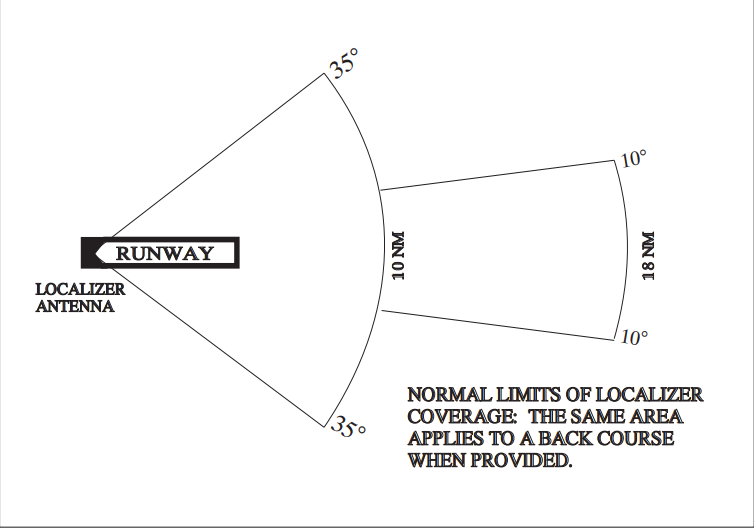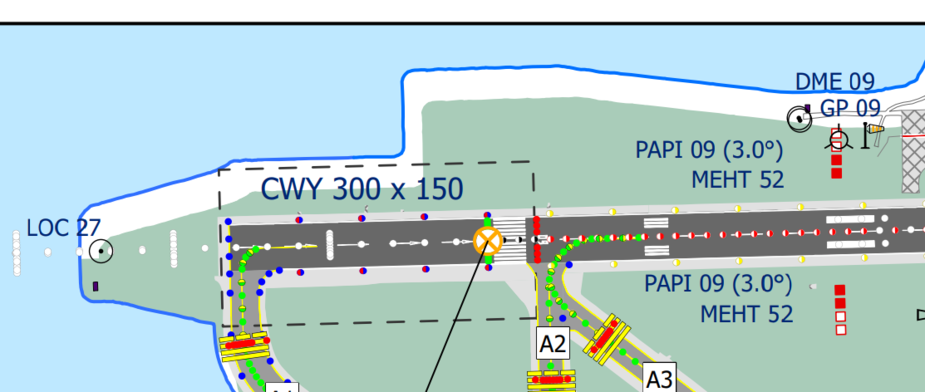172driver wrote:
At least in FAA-land the terminology GP (glide path) is used for GPS approaches and GS (glide slope) for ILS..
ICAO terminology is GP (glide path) for both.
At least in FAA-land the terminology GP (glide path) is used for GPS approaches and GS (glide slope) for ILS. A LOC approach doesn’t have vertical guidance.
Ibra wrote:
LOC: two directional signals from 2 antennas and you measure phase difference along the runway axis, you can only receive LOC in direct coverage area +/-2.5deg range (and reverse runway in back-course BC LOC as well, unless it’s Germany where they explicitly “hide” the back-course LOC signal to make sure you don’t fly it consciously or unconsciously)
It’s not the phase difference that is measured by the ILS receiver but the relative strength of the two signals. The glidepath works the same way. It would not even make sense to measure a phase difference as the two signals have different frequencies – 90 and 150 Hz. The localiser and glidepath carriers are modulated with these two frequencies.
In case someone doesn’t know, what is referred to as the “ILS frequency” is actually only the localiser frequency. The glidepath (GP) transmitters use an entirely different frequency (see e.g. LeSving’s AIP excerpt above) but the LOC and GP frequencies are paired so it is sufficient to tune the localiser frequency.
GP is within 8 degrees to 10 NM, although it can be certified for a higher range.
In practice this is irrelevant because you should never descend unless established (i.e., within half-scale deflection of the localizer).
What is more important is the vertical coverage, to avoid capturing a false glideslope.

Yes 2.5 is only the scale deflection, not (DOC) direct operational coverage when you would get “tune & flag”, also does +/-35deg apply to GP or it has a different lateral coverage than the LOC?
An important practical difference between the LOC (be it as component of an ILS or standalone) and a VOR, is that when using a CDI or HSI:
Ibra wrote:
you can only receive LOC in direct coverage area +/-2.5deg range
2.5° is full deflection, but LOC reception is guaranteed correct up to 35° off-course within 10 nmi and 10° off-course up to 18 nmi.

LeSving wrote:
So what does GP stand for? Glide something I guess? Does LOC + GP = ILS ?
Yes. Look at the wiki graphic I posted and you should see how it works.
The ILS has two independent systems (sometimes 3 if you add a DME).
The Localizer array, LOC , which gives horizontal guidance and which is located at the far end of the runway. Hence, it will continue to give horizontal guidance over the whole runway lenght, which i.e. is important in CAT III autoland operation, where the AP follows the localizer signal also after touchdown. The localizer defines one inbound track and is only capable of providing guidance for that one track and it’s opposite.
The Glidepath transmitter, GP, which gives vertical guidance and is located abeam the touchdown point.
And, if available, the DME transceiver, which provides distance to the threshold and which has replaced marker beacons, which before the age of DME gave two fixed distance markers from the runway.
A VOR is a totally different animal. It dissiminates a rotating signal, which allows the receiver to determine on which radial the current position is. The difference in functionality between VOR and LOC is the reason, LOC’s can only have specific frequencies so that the NAV receiver knows if it is dealing with a VOR or a LOC.
Why is LOC different form VOR ?
Glide Path (or Glide Slope)
LOC has the same principal as VOR in the cockpit but outside cockpit LOC is directional while VOR is omnidirectional
- VOR: pure omnidirectional, the primary rotating signal is radiated from each individual omnidirectional antenna (36 or 48 of them?) with another secondary pulse on all antennas when the primary signal passes through the north, you can receive VOR everywhere but you need to set OBS on +/-5deg ranges
- LOC: two directional signals from 2 antennas and you measure phase difference along the runway axis, you can only receive LOC in direct coverage area +/-2.5deg range (and reverse runway in back-course BC LOC as well, unless it’s Germany where they explicitly “hide” the back-course LOC signal to make sure you don’t fly it consciously or unconsciously)
Caveat, all based on PPL + IR(R) knowledge – I know there’s more to it that I don’t know.
GP = Glide Path
LOC + GP is what’s commonly called ILS. There are approaches which are LOC(aliser)-only. It gets beyond my basic understanding to say exactly how it differs from VOR, but it’s much more sensitive and has a very different coverage area.
DMEs can be put at the threshold, but a common trick (in the UK at least) is to put them somewhere an equal distance from the two thresholds at either end of the same runway (for example 09 and 27) and “bias” them to read zero at the threshold: imagine a hemisphere centered on the DME position where the distance is zero.
Mooney_Driver wrote:
The Localizer Antennae are located beyond the runway end of the relevant runway. Not at the threshold
aha. When you mention it. The DME and GP is is located at the touch down point, but the LOC just outside the threshold is for 27, not 09 

So what does GP stand for? Glide something I guess? Does LOC + GP = ILS ? I thought ILS was one unit with horizontal and vertical guidance. Why is LOC different form VOR ?